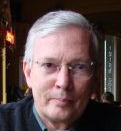The second annual Noël Gourmand (Christmas Wine and Gastronomy Festival) is over, and what a great festival it was! Held from the 19th to the 22nd of December at the Brongniart Palace, it was a wonderful opportunity for Parisians to come into contact with producers of fine French fare from all over the country.
I attended on the last day and had the occasion to meet and talk with a number of producers.
I met Nathalie, who was distributing chocolate ganaches produced by Sous l’Equateur, an artisanal chocolate maker located in the 16th arrondissement of Paris. She offered a divine cream-filled milk chocolate that contained bits of hazelnut. She told me that the company also sells fresh-roasted coffee on the premises.
I met Alban Laban of the company of the same name. He raises free-range ducks on his farm, located in the Pyrenees in southern France, and transforms them into canned products (such as rillettes de cananrd and cassoulet au confit de canard) and fresh products (such as saucisson de canard and foie gras au sel).
Nearby at another stand, Chantal (from a farm located in the Franche-Comté region, not too far from Switzerland) was cooking a batch of morbiflette, a hearty dish made from onion, sliced potato, chopped bacon, and Morbier cheese.
I stopped by the Lou Peyrou stand an ordered a sandwich made from a sliced baguette and Saint-Nectaire, a cow’s milk cheese from the Auvergne region. Gloria, who served me, was also selling aligot, a traditional dish made from melted cheese, butter, and mashed potato. While I was waiting for her to prepare my sandwich, I saw numerous customers come by to purchase copious portions of this waist-enhancing fare.
How in the world do the French stay slim eating these rich foods? It is one of life’s great mysteries.
Around the corner and in a side room I came upon Anthony of L’Eurélienne, a microbrewery located on a farm in the Loire Valley near the town of Chartres. Anthony told me that they brew their beer from the barley that they grow on the farm.
I spotted cuvée de Noël (Christmas beer) on the beverage list and ordered a 25cl glass. Served fresh from the tap, it was an unfiltered, unpasteurized, double-fermented, brown beer that I found fully satisfying and refreshing. Anthony said that it is flavored with star anise, cardamon, cinnamon, and licorice root.
I wondered if Elisabeth Pierre, who wrote Le Guide Hachette des Bières, had sampled this company’s beer. There are so many great artisanal breweries in France!
While at the bar, I met Jean-Pierre of BiPiA, a producer from the Basque region of France. As he finished his coffee break, he invited me to come by his stand.
When I got there, I immediately noticed the three Basque flags on the wall behind him. I saw that he was selling Espelette pepper in all its forms: in preserves, sauces, and condiments, as well as in jellies and purees. Although I didn’t see it at the stand, Espelette is also sold as whole peppers strung on cords.
I left the Noël Gourmand fair in good spirits. It had been a great opportunity to taste wonderful French regional products and meet the producers directly. I look forward to attending this event next year!
Like our blog? Join us on Facebook!














































